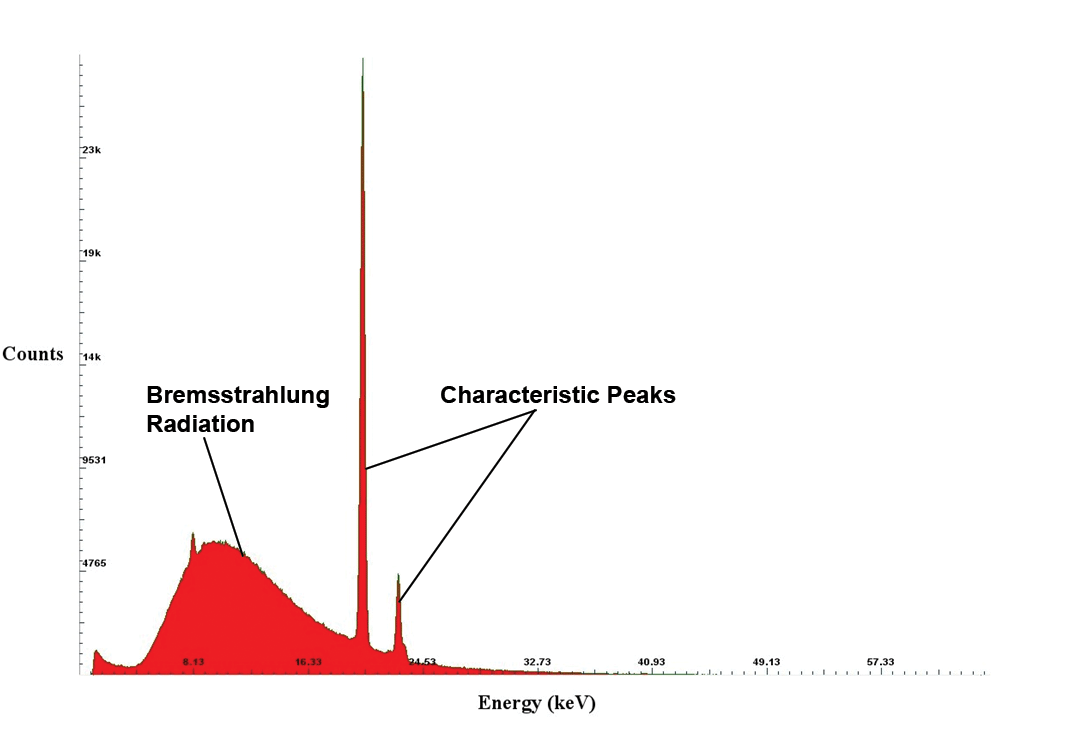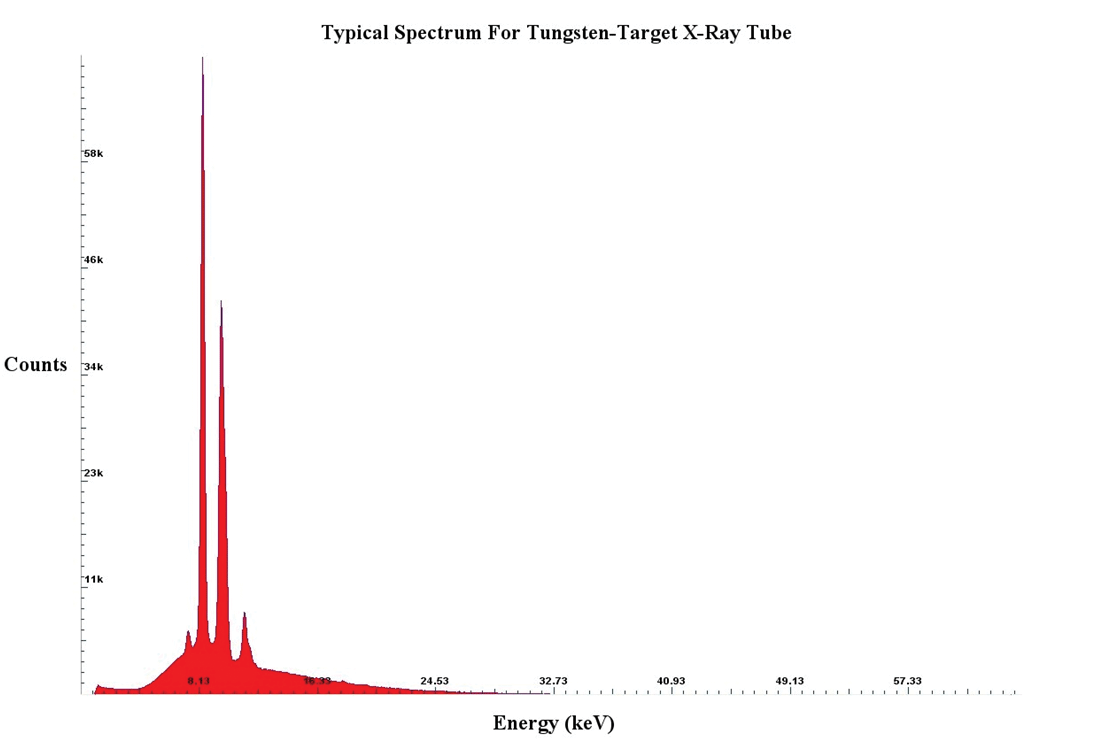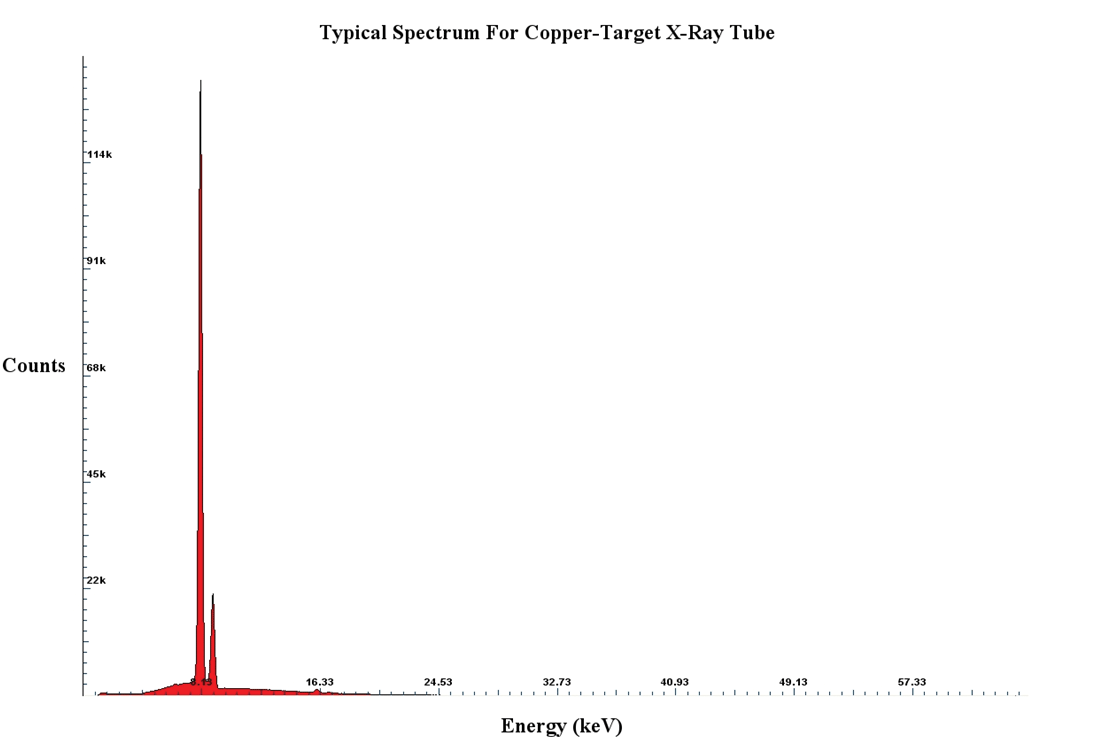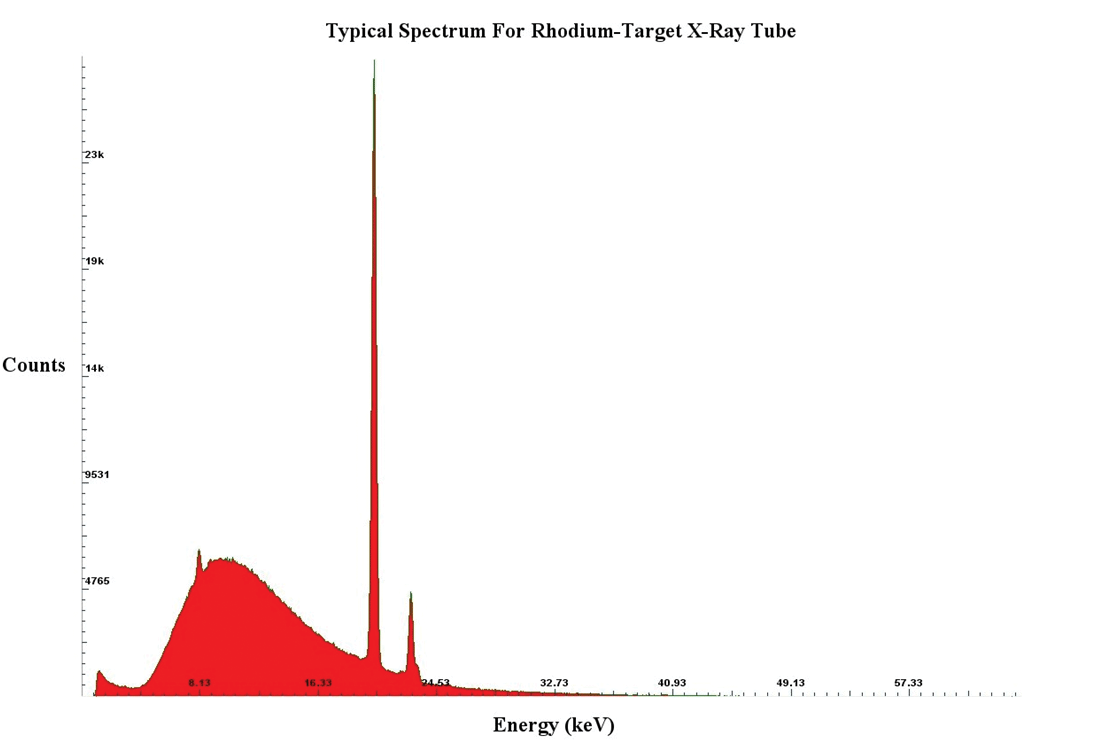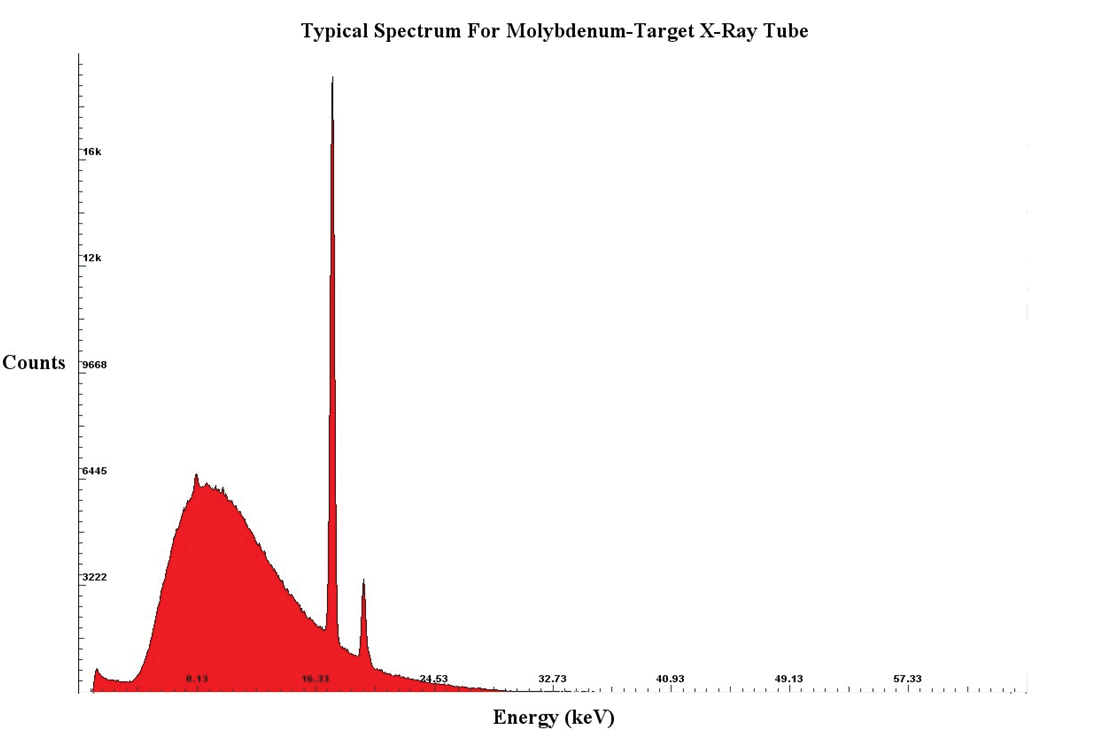Oxford Instruments offers X-ray tubes with different anode materials designed to suit a wide variety of applications. The anode material defines an X-ray tube’s characteristic spectrum. This application note shows the typical spectra of several different anode materials. The spectra provided are for reference only; your spectrum may differ from these according to the particular model of detector you are using, the geometry of your measurement setup, and the voltage and current on your X-ray tube.
X-ray production involves bombarding a metal target in an X-ray tube with high-speed electrons that have been accelerated by tens to hundreds of kilovolts of electric potential. The electrons can eject other electrons from the inner shells of the atoms of the metal anode. Those vacancies will be filled when electrons drop down from higher energy levels and emit X-rays. These are known as characteristic X-rays and they have sharply defined energies associated with the difference between the atomic energy levels of the anode atoms. The Bohr atomic model predicts the energies of the characteristic X-rays. An X-ray spectrum is partially defined by the “peaks” or “lines” that result from bombarding different anode materials with highly accelerated electrons.
Potted tubes are encapsulated in a silicone rubber material to provide electrical isolation and, in some cases, radiation shielding. High and low voltage cables may be included in the potting to aid connection to the X-ray power supply. Potted tubes provide an easier integration option than bare X-ray tubes however heat dissipation in a potted tube can be a challenge, and so potted tubes tend to be appropriate in low power or low duty cycle applications.
Packaged tubes are enclosed in a metal housing which acts as both a radiation shield and a cooling vessel. The packages are filled with a high dielectric liquid which both prevents high voltage breakdown (arcing) and effective cooling, requiring only an external fan to provide 50W of continuous power in many applications. Higher power packages with integrated water cooling systems are also available. Oxford’s packaged tubes are fitted with connectors for easy plug-and-play operation with our Shasta X-ray power supply, enabling a quick setup procedure.
Thus, the X-ray spectrum that is emitted from your X-ray tube is a combination of the characteristic peaks of the specific anode material and the Bremsstrahlung radiation that is present in all X-ray tubes.
The following spectra were gathered by pointing Oxford Instruments X-Ray Technology’s tubes directly at a Si-PIN photodiode detector system. There are a total of approximately one million counts in each spectrum.
